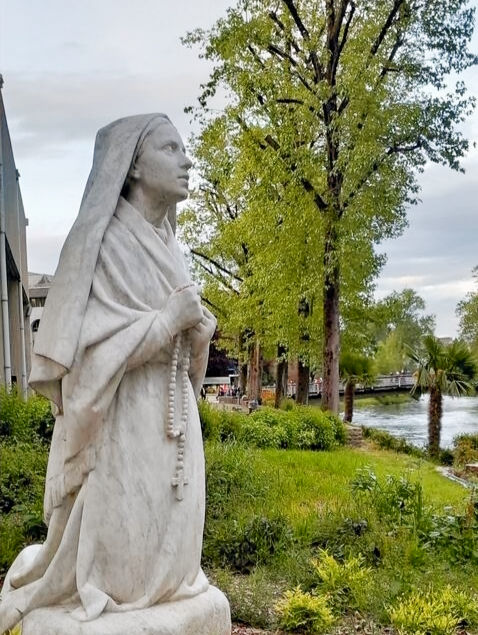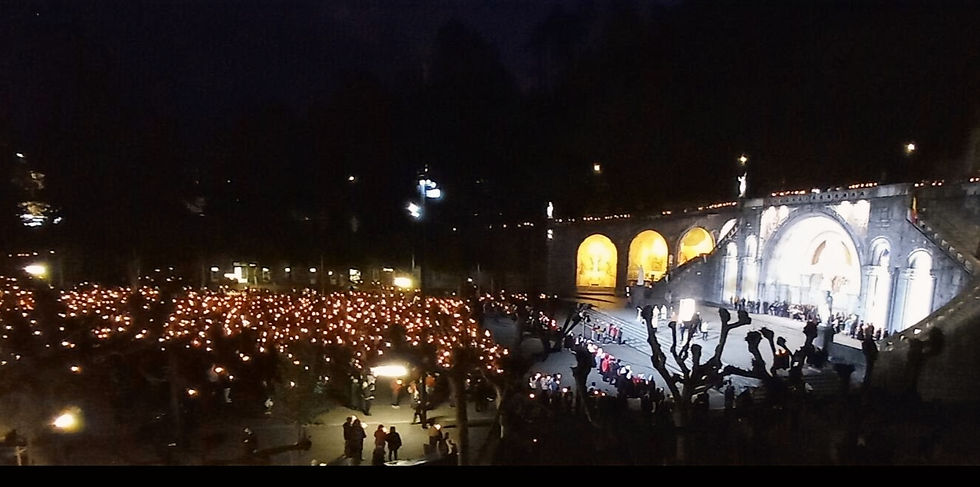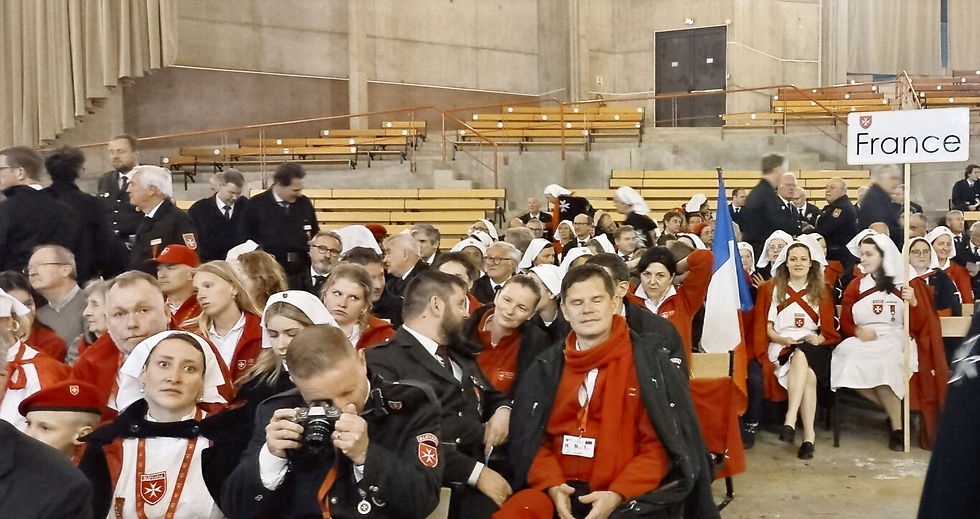Will Alkass reflects on a recent trip to Lourdes

There are more than 30 pilgrimage sites in Europe which the faithful have visited over the centuries, usually on foot having walked for many miles; each has an interesting story or legend, which is why their attractions have endured for centuries. People visit for different reasons and you don't have to be religious to appreciate these places' significance in the hearts and minds of those who make the hard journey. Some believers make the pilgrimage to pray and ask for a cure from an illness, or for solace, or just to contemplate something personal and transformative; or indeed to seek penitence, enlightenment and direction in their lives. None of these places has achieved world renown as much as that of the pilgrimage site of Our Lady of Lourdes in the south west of France; there can be very few people who haven't heard of Lourdes. In April 2024, my wife and I were among the estimated four to six million pilgrims who come to Lourdes every year; we made the two hour journey from Toulouse not on foot, but by train.
The Appearances, Les Apparitions
The story of Lourdes, and of how this rural spot in south west France became such a magnet for pilgrims from all over the world begins with the “Apparition “ in February 1858 when

“A girl of about fourteen to fifteen years dressed in a flowing white robe with a blue sash around the waist ” appeared to the fourteen year old peasant girl Bernadette Soubirous, who was gathering wood in the fields with her sister and a friend. Seventeen more apparitions followed in the cave of Massabielle and it was during the last appearance that the Lady introduced herself as “The Immaculate Conception”. During one of these appearances the Lady told Bernadette to dig a hole in the ground, which she did and from which a spring of water poured out. The water was a bit muddy to start with, but Bernadette drank it as the Lady had told her to do; little did Bernadette know that this little spring would become the source of many miracles.
There was some suspicion to start with and Bernadette was not believed by either her parents who told her not to go back again to that spot, or by the authorities who cordoned off the area to stop curious people from going there. In 1858 the Catholic church, confronted with nationwide questions, decided to launch a thorough investigation; then in 1860, faced with the undeniable evidence of witnesses who had recounted miraculous cures and healings, the local Bishop decided that “The Virgin Mary did indeed appear to Bernadette Soubirous”; thus initial suspicion was replaced with certainty.

This belief in the “Marian Veneration of Lourdes” was then endorsed through many visits by subsequent Popes and the 11th February became the feast day of Our Lady of Lourdes. In accordance with Our Lady of Lourdes' request, a cathedral was built in 1870 and consecrated in 1879. Many more buildings followed, including a large Conference Hall.
Bernadette Soubirous left Lourdes to become a nun in Nevers where she spent the rest of her life. She died of Tuberculosis in 1879 and the feast day of Saint Bernadette is celebrated on 18th February.

The little spring is still flowing with holy water, the source of which can be seen within the grotto. There are now taps for people to drink from, or to collect the water in bottles. Before the Covid pandemic it was possible to be baptised by immersion in a pool but this has since been replaced, with individuals instead washing their hands and face with flowing water in little private cubicles under the supervision of dedicated staff, who can also offer personal prayers.
It is noteworthy that the authorities in charge of the site have kept it very clean and free of cheap tourist attractions; however, out of necessity a large town has sprung up just outside the site to cater for the needs of the millions of visitors including hotels, restaurants and cafes.

During our visit, there was an award-giving ceremony for the Cross of Malta charity which was attended by members from a large number of countries, many of whom were there helping disabled people, dressed in their uniform of a red apron. The Maltese Cross has eight points with each point of the cross representing the core obligations or aspirations of these noble and dedicated charity workers whose roots can be traced to the Knights Hospitallers who served during the crusades. These core obligations are: Knightly virtue, Living in truth, Maintaining faith, Repenting one’s sins, Proving humility, Loving justice, Showing mercy, Being sincere and whole-hearted, and Enduring persecution.
Visiting Lourdes is bound to leave a long-lasting impression in people's minds no matter what the initial objective of their visit was. For us, apart from satisfying a long-held wish to visit Lourdes, we came away believing that the world is still a good place to be, and that there is still an abundance of the mercy, love and selfless dedication that is the hallmark of our Christian faith.

This beautiful statue, situated at the entrance to the Cathedral complex, summarises the whole
concept behind sites of pilgrimage and that of Lourdes in particular.

Comments